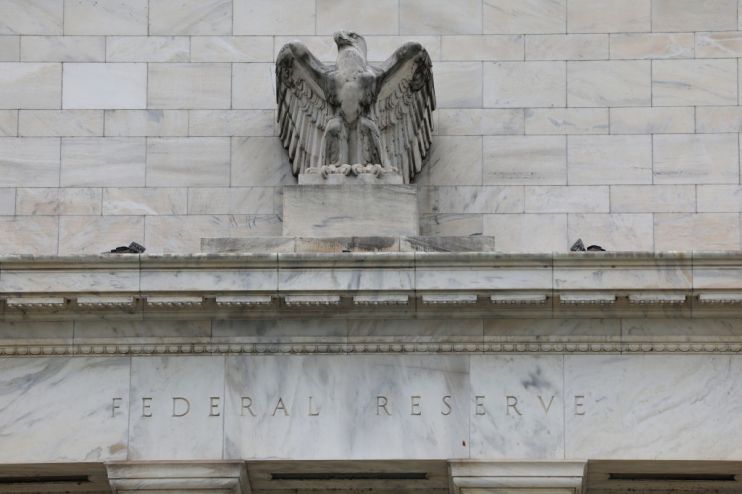US economy races ahead of UK despite Federal Reserve crushing Americans with rate hikes

The US economy is growing much faster than expected despite the Federal Reserve piling pressure on Americans with aggressive interest rate hikes to tame inflation, official figures out today show.
Stateside gross domestic product (GDP) climbed 2.9 per cent over the three months to December, better than the 2.6 per cent growth pencilled in by Wall Street.
The shock rise was driven by global demand for US exports running red hot despite the US dollar going on a tear over the last year.
A stronger dollar normally weighs on trade due to US exports becoming more expensive compared to other countries’ products.
Stock build up by companies was also a lot stronger than analysts forecast, boosting GDP growth.
The US economy is now much more likely than the UK to avoid a recession after today’s better than projected GDP numbers.
The American consumer is still hungry for goods and services. Household spending climbed 2.1 per cent in the final quarter of last year, down slightly from the last three months, but still strong.
Robust spending indicates the full effects of the Fed’s historic interest rate hike cycle has yet to feed through to ordinary Americans.
Chair Jerome Powell and the rest of the federal open market committee have raised borrowing at the fastest pace since the 1980s to tame the worst inflation crisis in 40 years.
The rate of price increases peaked in the summer at over nine per cent and has been on a steady decline ever since. That is easing pressure on household finances, strengthening incentives to spend.
Economists said consumption was a lot better in the earlier stages of last quarter and then petered out over the winter, indicating consumer spending is now on a downward path which may eventually tip the world’s largest economy into recession this year.
“Consumption growth slowed to 2.1 per cent, from 2.3 per cent, and that gain reflects strong growth at the start of the quarter, with the retail sales data suggesting that real consumption fell slightly over November and December,” Andrew Hunter, senior US economist at consultancy Capital Economics, said.
“That suggests higher rates were starting to take a bigger toll and sets the stage for weaker growth in the first quarter of this year,” he added.
Economists are divided over whether they think the US will slip into an official slump this year.
Unemployment is still very low and wages are rising quickly, giving households ammunition to keep spending in 2023.
“We think final demand growth will be minimal in the next couple quarters, with headline GDP falling. Whether this eventually is declared a recession will depend on what happens to employment and incomes, but they are both likely to soften markedly, at least,” Ian Shepherdson, chief economist at consultancy Pantheon Macroeconomics, said.
The Fed is trying to achieve a so-called “soft landing,” a scenario in which it is able to bring inflation back to its two per cent target without dealing unnecessary damage to the US economy.
Analysts reckon Powell and co will slow down to a 25 basis point rate hike at next Wednesday’s rate decision after three back-to-back 75 basis point rises last year – and a couple 50 basis point jumps – have done most of the heavy lifting in tightening financial conditions.